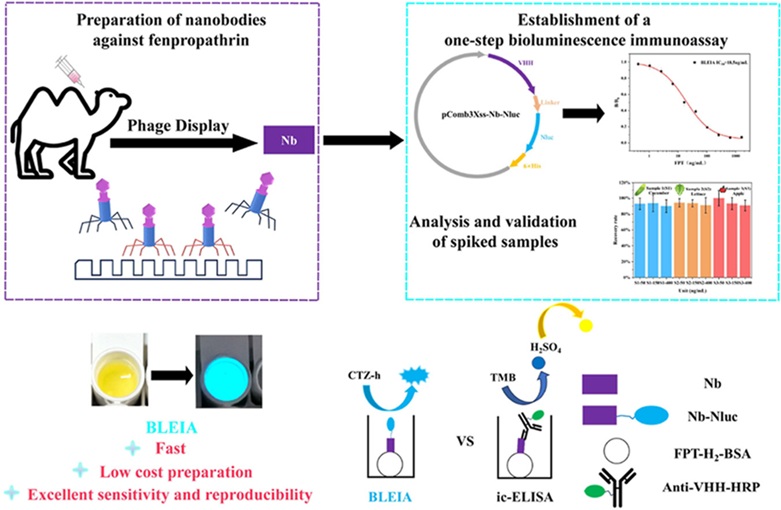Innovative Bioluminescent Immunoassay for Rapid Fenpropathrin Detection Using Nanobody-Nanoluciferase Fusion Protein

Fenpropathrin, a widely used insecticide, has become a major concern for both human health and the environment due to its persistence and toxicity. Given its widespread application on crops like fruits, cotton, and vegetables, it's critical to detect fenpropathrin residues effectively. Traditional detection methods, while common, often come with limitations such as long testing times and insufficient sensitivity. Fortunately, a new approach combining nanobody technology and bioluminescence offers a faster, more reliable way to monitor fenpropathrin levels.
At the heart of this advancement is the use of nanobodies, a unique class of antibodies derived from camelid animals like alpacas and llamas. Unlike traditional antibodies, nanobodies are smaller, more stable, and easier to produce at scale, making them ideal for biosensor applications. These characteristics allow for the development of more efficient and robust immunoassays, particularly for pesticide residue detection.
In this study, researchers isolated fenpropathrin-specific nanobodies using a phage display library—a rapid, high-throughput method for selecting binding proteins. The chosen nanobodies were then fused with nanoluciferase (Nluc), a highly efficient enzyme that emits a glowing light upon reacting with a substrate. This fusion of nanobody and nanoluciferase led to the creation of a bioluminescent enzyme immunoassay (BLEIA), which boasts significant improvements over traditional methods.
What makes this BLEIA stand out is its speed and sensitivity. The assay showed a half-maximal inhibitory concentration (IC50) of 18.5 ng/mL, which is a clear indication of its high sensitivity for fenpropathrin detection. It also reduced detection time by over 50% compared to traditional immunoassays like ic-ELISA, a common method in pesticide testing. Moreover, the BLEIA was validated with real samples, showing excellent recovery rates and minimal variation, confirming its reliability.
The fusion of nanobodies with nanoluciferase offers several advantages. First, the use of Nluc allows for instantaneous luminescence, eliminating the need for time-consuming color development steps. This makes the assay faster, simpler, and more cost-effective. Additionally, Nluc's luminescence is 150 times stronger than other conventional tracers, further improving the sensitivity of the test. This fusion approach also eliminates the need for secondary antibodies, simplifying the entire detection process and reducing potential sources of error.
The promising results from this study demonstrate the potential of combining nanobody technology and nanoluciferase fusion for rapid and accurate pesticide monitoring. With food safety being a top priority globally, this new bioluminescent assay can offer an efficient tool for detecting fenpropathrin residues in agricultural products. It's a perfect example of how nanobody-based detection can revolutionize traditional testing methods, enabling faster, cheaper, and more reliable solutions for the agricultural and environmental sectors.
Source: ScienceDirect